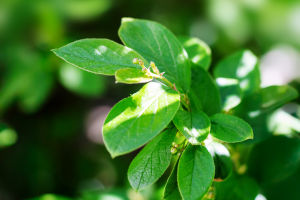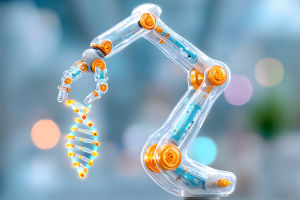It started with a single lemon and a bored 9-year-old on a rainy Saturday. Within 10 minutes, our kitchen had turned into a makeshift science lab, complete with bubbling citrus and squeals of surprise.
That one moment reminded me how accessible—and seriously fun—science can be when we bring it into our everyday spaces.
You don't need a lab coat, high-tech equipment, or a degree to do science. With just a few common items from your kitchen or bathroom, you can create hands-on experiments that explain real scientific principles.
And whether you're 7 or 70, these experiments turn curiosity into a full-on “wow” moment.
Let's dive into some specific, safe, and surprisingly fascinating science activities you can try at home—today.
1. Erupting Lemon Volcano
Key Concept: Acid-base reaction
This one's perfect for younger kids and uses ingredients you probably already have.
You'll need:
• 1 large lemon
• Baking soda
• Dish soap
• Food coloring (optional)
• A spoon or popsicle stick
How to do it:
1. Cut the lemon in half and place it on a plate.
2. Use the spoon to poke and mash the pulp to release some juice.
3. Add a few drops of dish soap and food coloring to the lemon.
4. Spoon in a small amount of baking soda into the center.
What happens?
You'll see fizzy bubbles erupting from the lemon. The citric acid in the lemon reacts with the baking soda (a base), producing carbon dioxide gas. The dish soap traps the gas, creating foam.
It's a safe, engaging way to show chemical reactions in action!
2. DIY Invisible Ink
Key Concept: Oxidation and chemical visibility
Who doesn't love a little secret message game?
You'll need:
• Lemon juice or white vinegar
• Cotton swabs or paintbrush
• White paper
• A lamp or iron (for heat)
How to do it:
1. Dip the cotton swab into lemon juice and write a message on the paper.
2. Let it dry completely.
3. To reveal the message, gently heat the paper under a lamp or with a warm iron (adult supervision needed).
Why it works:
The lemon juice weakens the fibers in the paper. When heated, these areas oxidize faster than the rest, turning brown and revealing the message. It's a basic intro to chemistry and oxidation, made fun.
3. Walking Water Rainbow
**Key Concept:** Capillary action and color mixingThis experiment is a visual delight and explains how water moves through tiny spaces—just like it does in plant stems.
You'll need:
• 6 cups or glasses
• Water
• Paper towels
• Food coloring (red, yellow, blue)
How to do it:
1. Fill every other glass with water (cups 1, 3, and 5). Leave the others empty.
2. Add food coloring: red in cup 1, yellow in cup 3, blue in cup 5.
3. Fold paper towels into strips and place them between each pair of cups.
What happens?
Over a few hours, the colored water "walks" along the towels into the empty cups, eventually mixing to form secondary colors like green, orange, and purple.
Great for visual learners and a simple demo of how plants draw water from their roots.
4. Pepper Runaway Surface Tension Trick
**Key Concept:** Surface tension and molecular interactionThis one looks like magic but teaches about the behavior of water molecules.
You'll need:
• A bowl of water
• Ground black pepper
• Dish soap
How to do it:
1. Sprinkle pepper on top of the water.
2. Dip a fingertip into dish soap, then touch the center of the water surface.
What happens?
The pepper instantly scatters to the edges of the bowl. Dish soap breaks the surface tension of the water, and the molecules pull away from the soap point.
It's quick, surprising, and totally mess-free.
5. Balloon-Powered Car
**Key Concept:** Newton's third law of motionPerfect for older kids or those into building things. This one is fun and educational.
You'll need:
• A balloon
• Drinking straws
• Tape
• Cardboard or thick paper
• Bottle caps (for wheels)
• Skewers or toothpicks
How to do it:
1. Build a simple car body using the cardboard and attach bottle caps as wheels with the skewers.
2. Tape a straw to the top of the car pointing backwards.
3. Inflate the balloon, pinch the end, and attach it over the straw's opening.
4. Place the car on the ground and let go!
Why it works:
As air rushes out of the balloon, it pushes the car forward in the opposite direction. It's a playful way to explore action and reaction.
6. Homemade Lava Lamp
**Key Concept:** Density and chemical reactionThis classic experiment brings chemistry and color into a single glowing display.
You'll need:
• A clear bottle or jar
• Water
• Vegetable oil
• Food coloring
• Alka-Seltzer tablet or baking soda and vinegar mix
How to do it:
1. Fill the jar about one-third with water, then top off with oil.
2. Add food coloring (it will mix with the water).
3. Drop in the tablet and watch!
What happens?
Gas bubbles from the reaction lift colored water through the oil. When they reach the top and pop, the water drops back down. It's like a lava lamp—and a cool way to show how different liquids interact.
So, Lykkers, which one of these are you tempted to try first? Whether you're looking to entertain a curious kid, reconnect with your own inner science geek, or just fill an hour with creativit, these experiments offer more than fun—they build understanding.
Have a favorite home science experiment that blew your mind as a kid? Or want us to explain why something worked (or didn't) in your own attempt? Let's swap ideas—after all, learning gets better when we do it together.


